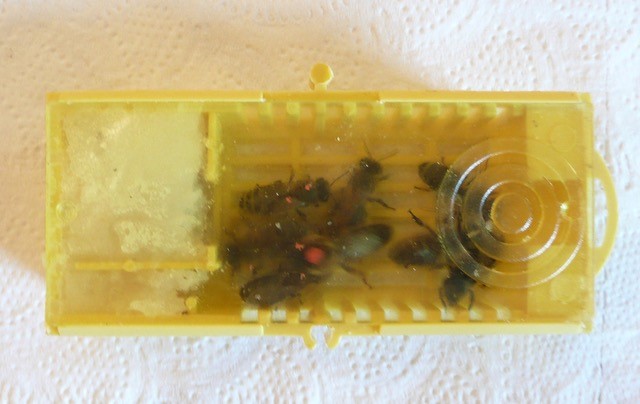Bee Blog August
01 August 2018
Hello,
I am Gerald Bushby (pronounced bush bee!) a beekeeper in Weston on the Green, a small village in Oxfordshire. I am going to be writing a monthly blog about the bees in my apiary. I hope you will find it interesting. I should start by saying that I am not an expert, having only kept bees for three years. Anything I say is my own personal opinion; I accept that there may often be other views and opinions.
I don’t know whether my bees are predictive of or reactive to weather conditions but after enduring the “beast from the east” not that long ago (March), they have certainly been enjoying the current heat wave. Perhaps the extremes of weather we have been experiencing is the reason why most local colonies chose not to swarm this year. In May I thought that there would be little honey produced this year from my hive given the very slow start and the poor weather. On the contrary however the bees in my one remaining hive have certainly been making “honey” whilst the sun has been shining. They have almost filled three supers even after I had removed some of their brood to form a new nucleus. The continuous fine weather has meant that the bees have been working every day non-stop and flowering plants like lavender and asparagus have been awash with bees.
You may recall that I ended last month’s blog explaining how I had carried out a split of my main hive to try to produce another colony for next year. As the bees had shown no tendency to swarm I had forced some bees I had placed in a nucleus box to think that they were queenless and they had produced a Queen cell. I was waiting to see if the Queen had hatched, been mated and had started to produce new brood, my Plan B.
At the back of my mind however was a concern that time was ticking away this season for me to be successful in rearing another colony that would have sufficient time to develop to survive over winter. I was fairly sure that nucleus colony had produced a Queen but a lot can happen to a Queen on a mating flight; she can become lost, be eaten by a bird or just fail to mate. I kept opening up the nucleus looking for a Queen, eggs and larvae but could not find any. I decided therefore not to wait any further but to instigate Plan C. Plan C was to buy a new Queen and introduce her to the nucleus. Furthermore as the main hive was developing well in the heat wave I thought that if I bought two Queens I could make up another nucleus box using some more frames, brood and bees from the main hive and double my chances of a nucleus colony surviving over winter.
I therefore placed an order with a supplier in Andover and two new Queens dually arrived shortly afterwards in a jiffy bag via first class post. A sticker on the envelope stated “live bees, handle with care”. The postman looked a little concerned and seemed happy to have the somewhat loudly buzzing envelope out of his van. Both queens, marked with a red dot (this years colour), were sent in their own individual plastic container along with several worker bee attendants. These workers are needed to feed the Queen. A Queen cannot feed herself, why would you if you had so many workers to look after you in a hive? My photograph this month shows the plastic container with the Queen (marked with a red dot) and her attendants. At the left hand end of the container is a hole in the plastic for the Queen to eventually exit from. You can see a white substance at this left hand end, blocking the exit. This is fondant and has two purposes. Firstly it provided sustenance for the Queen and her workers whilst they are in the container and secondly it delays the exit of the Queen from the cage when she is placed in the nucleus.
As I have probably mentioned previously, the workings of a colony are controlled by the pheromones produced by the Queen. The bees need some time to become familiar with the newly introduced Queens pheromones. If a new Queen was just introduced directly into the colony, the bees would kill the Queen straight away considering he to be an intruder. We therefore introduce a new Queen into a colony in the plastic container with the exit blocked by fondant. It takes the workers in the colony a few days to eat through the fondant and release the Queen. By this time the theory is that the colony has become used to the new Queens pheromones and will be accepted.
So I have my two new Queens. The next job is to introduce one to the nucleus I have already formed and make up another nucleus for the second Queen. It all sounds quite straightforward.
More next month.
I am a proud supporter of the ‘Bees for development’ charity, my love of the bee drew me to this wonderful UK based charity and the great work they do around the world with Bees and the impact they can have on people’s lives. Please help me support this wonderful organisation, as 2BScientific will be doing with donations to this hard-working charity.
